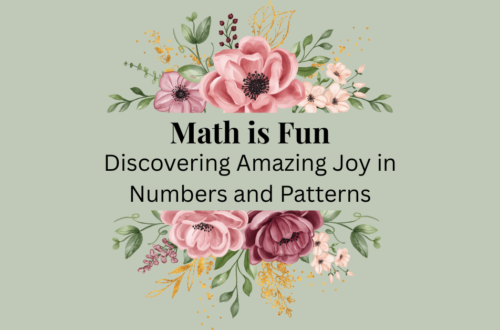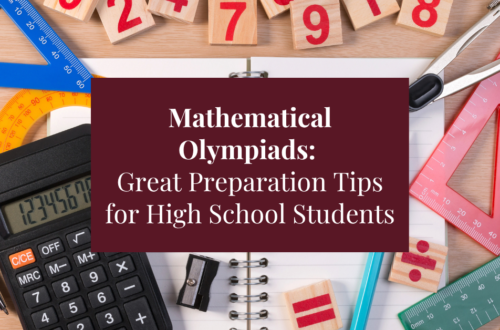Incorporating games into your high school math class is an excellent way to make learning more interactive, engaging, and enjoyable. Gamification brings an element of fun to what can sometimes feel like tedious or complex content, motivating students to participate actively and practice their skills in a way that feels more like play than work. By using educational games, you can help your students retain concepts longer, improve problem-solving skills, and foster collaboration and healthy competition.
Here’s how you can gamify your math class with some awesome educational games:
1. Math Jeopardy
Best For: Review and practice of various math topics.
Overview: Adapt the classic TV game show Jeopardy to review key math concepts, formulas, and problem-solving skills. This game can be tailored to any topic or unit, such as algebra, geometry, or calculus, and is perfect for group work.
How to Play:
- Divide students into teams.
- Prepare a set of questions (with increasing difficulty) organized by category (e.g., Geometry, Algebra, Word Problems, Trigonometry, etc.).
- Teams take turns selecting categories and answering questions.
- Correct answers earn points, while incorrect answers can be passed to another team.
Why It Works: Math Jeopardy encourages students to collaborate and think quickly under pressure, making it an exciting way to reinforce knowledge while practicing teamwork and problem-solving.
2. Kahoot!
Best For: Quick quizzes, review, and real-time assessments.
Overview: Kahoot! is a widely popular online game-based learning platform. It allows you to create customized quizzes or select from a library of ready-made math quizzes that cover a variety of topics. Students join the quiz on their devices, and the game takes place in real-time, allowing everyone to see how they’re doing as the game progresses.
How to Play:
- Create a quiz or use an existing one related to the current math topic.
- Have students log in using a unique game PIN on their devices.
- Read the questions aloud and give students time to answer.
- The faster and more accurately students answer, the more points they score.
Why It Works: Kahoot! provides instant feedback and lets students see where they need improvement. The competitive nature of the game motivates students to engage and pay attention, and it’s a fantastic tool for reviewing material before tests or midterms.
3. Math Bingo
Best For: Reviewing key concepts and vocabulary in a fun way.
Overview: Math Bingo combines the classic Bingo game with math problems. It’s great for reviewing equations, formulas, or specific math skills like factoring, adding fractions, or solving for x.
How to Play:
- Provide students with Bingo cards containing numbers or equations.
- As the teacher, call out math problems (e.g., “Solve for x” or “What is 9 + 4?”), and students mark the correct answer on their Bingo cards.
- The first student to get a full row or column wins.
Why It Works: Math Bingo turns a typical game of chance into an educational experience. It’s perfect for reinforcing basic arithmetic, equations, and even higher-level concepts in a more relaxed, low-pressure environment.
4. Prodigy Math Game
Best For: Individualized learning in subjects like algebra, geometry, and basic arithmetic.
Overview: Prodigy is an online fantasy-based math game where students embark on an adventure, battling opponents by solving math problems. The game adjusts to each student’s level, ensuring that they are working on problems that challenge them without being too difficult.
How to Play:
- Students log in and begin playing the game, which covers topics in algebra, geometry, and basic math.
- To complete tasks, defeat enemies, and advance in the game, students solve math problems.
- Teachers can track student progress through a dashboard and assign specific areas of focus.
Why It Works: Prodigy’s adaptive learning approach ensures that students are engaged at their own level, preventing frustration while providing an exciting challenge. Its game-based approach encourages students to keep practicing and improving their math skills, often without realizing they’re learning.
5. Escape Room Challenges
Best For: Problem-solving, critical thinking, and group collaboration.
Overview: Math escape rooms involve students solving math-related puzzles and problems to “escape” from a virtual or physical locked room. These games promote teamwork, communication, and problem-solving, and they can be tailored to various math topics like geometry, algebra, or trigonometry.
How to Play:
- Set up a series of math puzzles that students need to solve in order to progress through the game.
- These puzzles can range from solving equations to finding hidden clues within word problems.
- Divide students into teams and have them race against each other to finish the challenges and “escape.”
Why It Works: Escape rooms are a fantastic way to foster collaboration, critical thinking, and decision-making. The time constraints and competition motivate students to work together to solve problems and encourage deeper engagement with the material.
6. Math Pictionary
Best For: Vocabulary, visualizing concepts, and teamwork.
Overview: Math Pictionary is an interactive drawing game where students work in teams to draw and guess math-related terms and concepts. It’s a fun way to reinforce vocabulary and test students’ understanding of mathematical ideas.
How to Play:
- Write down a list of math terms (e.g., “quadratic equation,” “isosceles triangle,” “slope”) and put them in a hat.
- Students take turns drawing a term from the hat and drawing it on the board or on paper.
- Their team guesses what the drawing represents based on the clues.
Why It Works: This game encourages students to think critically about math terminology and concepts. It’s a fun and creative way to help students visualize abstract ideas, reinforcing their understanding through art and collaboration.
7. Math Board Games
Best For: Strategy, review, and reinforcement of concepts.
Overview: There are many board games designed to teach and reinforce math concepts. Games like Monopoly, Mathopoly, and 24 Game can be customized to teach specific math topics while keeping students entertained.
How to Play:
- Use pre-made math board games or create your own. For example, Mathopoly uses a board similar to Monopoly, but players need to solve math problems to move forward.
- Students play individually or in teams, solving math problems to progress on the game board.
- Include different levels of difficulty and adjust the problems as needed.
Why It Works: Board games are a great way to reinforce math skills in a more relaxed setting. The fun, competitive nature of the game keeps students engaged, and the tactile, hands-on experience promotes collaboration and communication.
Conclusion
Gamifying your high school math class is a fantastic way to make learning more enjoyable, foster teamwork, and improve students’ problem-solving skills. Educational math games give students the chance to practice concepts in a hands-on, engaging environment. Whether you use Kahoot! for a quick review or Prodigy to guide students through personalized challenges, incorporating games into your lessons will make math feel more approachable and fun.
What are your favorite math games to use in the classroom? Share your thoughts, tips, or any new game ideas in the comments below – we’d love to hear from you!





